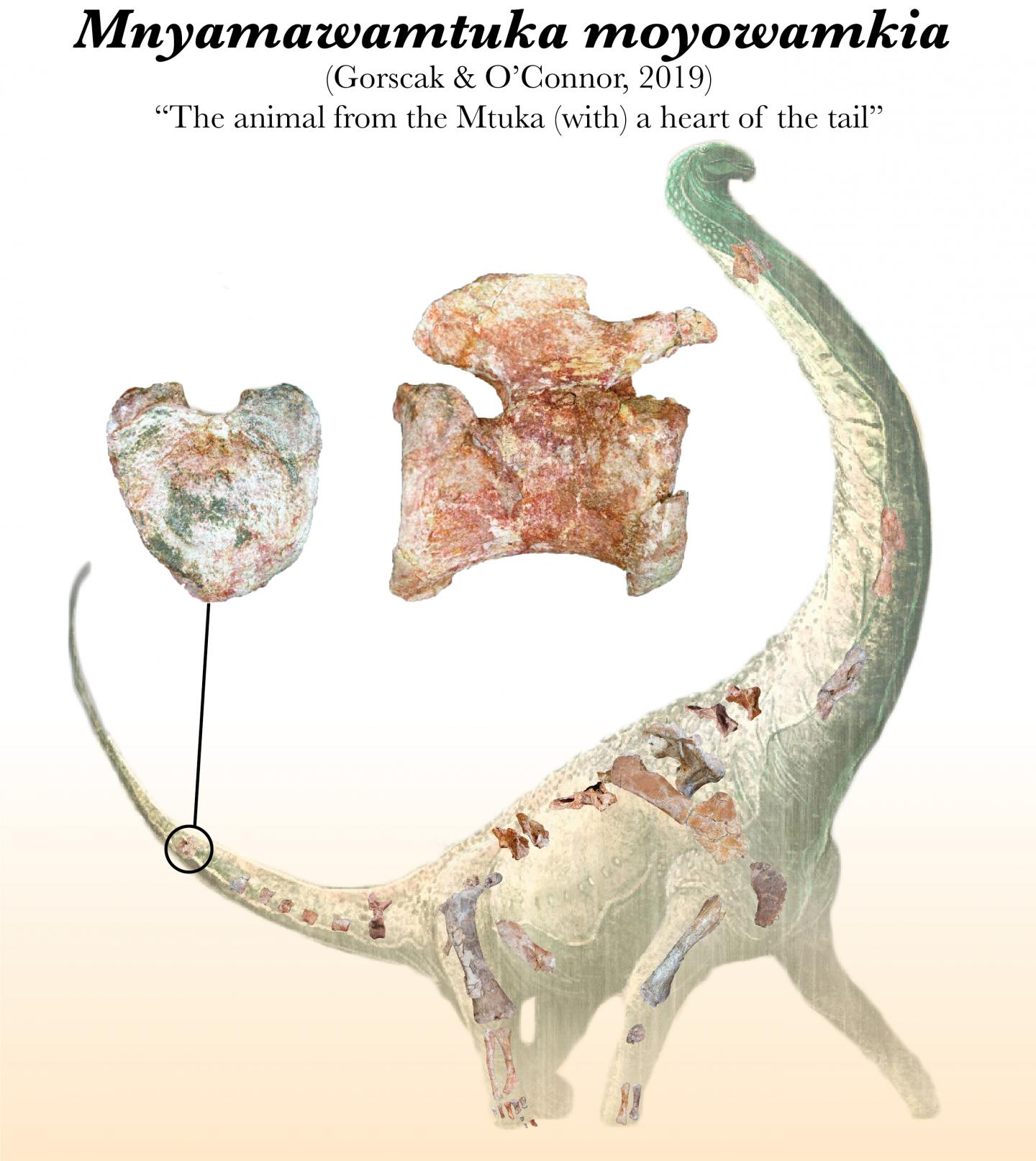It would seem that love was in the air, even during the Jurassic era, when there was a massive dinosaur with heart-shaped tail bones, according to a new study conducted by Ohio University, published in the journal PLOS One. This discovery is a perfect highlight to Valentine’s Day that was celebrated yesterday.
Scientists refer to the “romantic” dinosaur as Mnyamawamtuka moyowamkig. The name translates to “beast of the Mtuka” and “heart of the tail,” in Swahili. The dinosaur with heart-shaped tail bones is classified as a titanosaur, whose bones have been lying for thousands of years until being recently unearthed on the cliffs of Tanzania.
Even though a lot of time has passed, researchers were able to unearth a significant amount of fossilized bones and teeth which can reveal a lot about the huge reptile. Along with the fossilized bones, scientists unearthed the remains of the massive dinosaur with heart-shaped tail bones. Scientists say that these fossils can reveal a lot about the dinosaurs and the fauna that lived at that time.
“This new dinosaur gives us important information about African fauna during a time of evolutionary change,” said Judy Skog, a program director in the National Science Foundation’s Division of Earth Sciences, which funded the research, in a statement. “The discovery offers insights into paleogeography during the Cretaceous. It’s also timely information about an animal with heart-shaped tail bones during this week of Valentine’s Day.”
The fossilized bones were initially discovered in 2004. However, due to the massive size of the dinosaur, it took scientists years until they were able to finally extract it in 2008. The dinosaur is estimated to have had walked the Earth during the Cretaceous era.
The study’s lead author Dr. Eric Gorscak added that these findings are particularly important for this dinosaur species, given that not much is known about the titanosaurs, except that they were so giant and massive that some were thought to weigh almost 76 tons.
“Although titanosaurs became one of the most successful dinosaur groups before the infamous mass extinction capping the Age of Dinosaurs, their early evolutionary history remains obscure, and Mnyamawamtuka helps tell those beginnings, especially for their African-side of the story,” Gorscak said. “The wealth of information from the skeleton indicates it was distantly related to other known African titanosaurs, except for some interesting similarities with another dinosaur, Malawisaurus, from just across the Tanzania-Malawi border.”
The bones also suggest that the beast was very young when it died, Gorscak told LiveScience in an interview. Their careful examination showed that the animal didn’t have teeth marks, which means it hadn’t been eaten to its death. However, they suggest that it died a rather quick death, given the amount of preserved bones they found.
Although not much is known about titanosaurs, scientists have so far found that they were common in South America. This particular specimen was found in Tanzania, but there were also species found in other parts of Africa, pointing at its previously-unknown diversity.
“The discovery of dinosaurs like Mnyamawamtuka and others we have recently discovered is like doing a four-dimensional connect the dots,” Dr. Patrick O’Connor, professor of anatomy at Ohio University, said in the statement.





